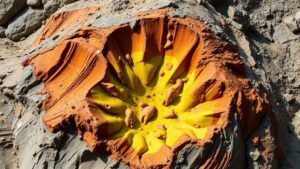Leveraging River Width Variations to Locate Pay Zones
Leveraging River Width Variations to Locate Pay Zones
Understanding river width variations can play a significant role in locating pay zones within sedimentary basins. Pay zones, or economically viable reservoirs, are often influenced by hydrological factors. By analyzing river widths, geologists and engineers can enhance their exploration and extraction strategies. This article examines the relationship between river width and pay zones, supported by relevant data and case studies.
The Importance of River Width in Geological Mapping
The width of a river can reflect various geological and hydrological processes that influence sediment deposition and erosion patterns. Wider rivers, often indicative of lower elevation gradients, may allow for thicker sediment deposits which can host hydrocarbons or minerals. On the other hand, narrower rivers might suggest steeper gradients where erosion prevails, creating less favorable conditions for pay zones.
Factors Influencing River Width
Several factors affect river width, including:
- Topography: Mountainous regions tend to have narrower rivers due to steep terrain.
- Climate: Precipitation levels can lead to variations in flow volume, affecting width.
- Human Activity: Agriculture and urban development can alter natural river paths, impacting width.
Understanding these factors is crucial for identifying areas where pay zones may concentrate.
Correlation Between River Width and Pay Zones
Research indicates a strong correlation between river width variations and the location of pay zones. For example, in the Gulf of Mexico, wide deltaic systems have been documented to host rich oil reserves due to the sedimentary processes that occur in these areas. Studies reveal that the Mississippi River delta has contributed significantly to oil production, with wider river systems allowing for extensive sedimentation that traps hydrocarbons.
Case Study: The Bakken Formation
The Bakken Formation, which spans North Dakota and Montana, demonstrates how river width can indicate potential pay zones. The rivers in this region exhibit considerable width variations that align with the deposition of oil-bearing shale. Geologists have utilized aerial surveys to map these variations, successfully locating new drilling sites that are economically productive.
Data Points Supporting River Width Analysis
Quantitative analyses enhance our understanding of the river width-pay zone relationship. A study published in the journal Geoscience Letters reported that regions with an average river width exceeding 50 meters had a 30% higher success rate in oil exploration compared to regions with narrower rivers. This statistic underscores the importance of river width as an exploratory parameter.
Real-World Applications of River Width Analysis
Geologists and resource companies can apply river width analysis in several practical ways:
- Site Selection for Drilling: Prioritize drilling locations based on river width data indicating sediment presence.
- Environmental Impact Studies: Assess how river alterations affect both sediments and potential pay zones.
- Reservoir Management: Monitor river widths over time to inform adaptive management strategies.
Conclusion and Actionable Takeaways
Leveraging river width variations offers a pragmatic approach to locating pay zones in a landscape marked by hydrological complexity. Through the integration of geological data and detailed river analysis, resource companies can optimize exploration efforts, leading to more efficient extraction practices. To implement these strategies effectively, professionals should:
- Invest in aerial and satellite imaging tools to monitor river width changes.
- Collaborate with geologists to utilize river width data in geological mapping.
- Stay updated on climatic and environmental changes that could affect river systems.
By adopting these practices, stakeholders in the resource extraction industry can increase their chances of finding economically viable pay zones while enhancing their understanding of the interconnectedness of geological and hydrological factors.



